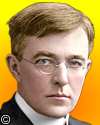
On 16 Aug 1957, Irving Langmuir died, the American physical chemist who was awarded the 1932 Nobel Prize for Chemistry. He is famous for his investigation of reactions at thin surface films. He improved incandescent light bulbs by filling them with inert gases rather than a vacuum, and also developed atomic-hydrogen welding.
When he wrote an article for Boys’ Life in June 1941, his topic for his youthful readers was the value of Summer jobs. Within his article he reveals some of his boyhood experiences that contributed to his abilities as a research scientist and led to winning a Nobel Prize. Likewise, he also describes what drives his assistant, and gives him outstanding qualities.
Although written over a half-century ago, Dr Irving Langmuir’s article has a theme that remains vitally true today: Information students get by themselves is enormously more valuable than that which is taught to them in school. Students need opportunities—outside of school—to research, inquire, reason, get hands-on, explore, be curious and explain the phenomena around them.

On 16 Aug 1920, Sir Norman Lockyer died, English astronomer who in 1868 discovered and named the element helium that he found in the Sun's atmosphere before it had been detected on Earth. Lockyer made numerous genuine discoveries in his studies of stellar evolution, solar prominences, spectroscopy, the orientation of Stonehenge and Egyptian monuments along major astronomical axes, and in other areas. As its founder editor, he left Nature, the world's leading scientific journal, as his lasting memorial.
Sir Norman Lockyer was one of the key figures of the late Victorian period. Today's book pick is: Science and Controversy: A Biography of Sir Norman Lockyer, Founder Editor of Nature (Macmillan Science), by A. Meadows. The author shows how Locker's life, and controversial theories, remain an important part of science history. His ideas were at the forefront of public debate, and ranged from the brilliant to the perverse. This entertaining and readable biography provides a fascinating insight into his eventful life.
Lockyer is most nearly comparable with T. H. Huxley. Both thrived on controversy; but whereas Huxley generally came out the winner, Lockyer more often came out the loser. "Yet this, in its way, makes Lockyer the more interesting of the two: as he stood at a slight angle to the world view of his scientific peers, so he seems to hold up for us a mirror to their beliefs. Throughout it all he retained that self-confidence which is often claimed as a Victorian characteristic."
It is available from Amazon, typically about New from $3.18. Used from $3.18. (As of earlier time of writing - subject to change.)
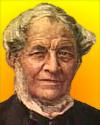 | Bin Chemiker der kein Physiker ist, ist gar nichts. A chemist who is not a physicist is nothing at all. |
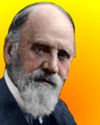 | But in science the credit goes to the man who convinces the world, not to the man to whom the idea first occurs. Not the man who finds a grain of new and precious quality but to him who sows it, reaps it, grinds it and feeds the world on it. |
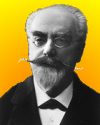 | Everyone believes in the law of errors, the experimenters because they think it is a mathematical theorem, and the mathematicians because they think it is an experimental fact. |
| Before you look at today's web page, see if you can answer some of these questions about the events that happened on this day. Some of the names are very familiar. Others will likely stump you. Tickle your curiosity with these questions, then check your answers on today's web page. | |
| Births | |
 | Gabriel Lippman, born 16 Aug 1845, was a French physicist, who received the Nobel Prize for Physics in 1908 for producing an advance concerning the application of a photographic plate. Lippmann was a giant of his day in classical physics research, especially in optics and electricity. What was this photographic development? |
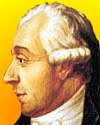 | Pierre Mechain, born 16 Aug 1744, was a French hydrographer, and astronomer at the naval map archives in Paris who, with Jean Delambre, measured the meridian arc from Dunkirk, France, to Barcelona (between 1792 and 1798). What was the significant about this measurement? |
| Deaths | |
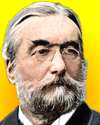 | Sir Joseph Norman Lockyer (1836-1920) was a British astronomer who in 1868 discovered and named a previously unknown element that he found in the Sun's atmosphere. He also applied the name chromosphere for the sun's outer layer. What element did he discover and name? |
 | Robert Bunsen (1811-1899) is known for his laboratory gas burner (which he turned over to his assistant to actually make). Although is familiar as a heat source in chemistry experiments, that is merely incidental. In fact, Bunsen developed it for another, quite specific, research interest. What was his main use for the burner flame? |
| Events | |
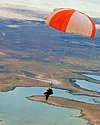 | On 16 Aug 1960, Captain Joseph W. Kittinger made the longest delayed parachute jump on record. When he bailed out of a balloon, he used a six-foot canopy to stabilize against a fatal flat spin. He dropped a record distance, taking 4 mn 49 sec, before opening his main 28-foot parachute over New Mexico. How many kilometers or miles did he fall before opening his main parachute? |
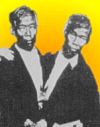 | On 16 Aug 1829, twins Chang and Eng Bunker, arrived in Boston from aboard ship to be exhibited to the Western world. They were joined at the waist by a band of cartilage, about 8 in. (20 cm) circumference and 4 in. (10 cm) long. In which country were they born? |
Fast answers for the previous newsletter for August 15: the wave nature of electrons • archaeology • first round-the-world solo flight • Lake Gatun • freight delivery • Hello!.
 If you enjoy this newsletter, the website, or wish to offer encouragement or ideas, please send feedback by using your mail reader Reply button.
If you enjoy this newsletter, the website, or wish to offer encouragement or ideas, please send feedback by using your mail reader Reply button. Your click on a Facebook, StumbleUpon, or other social button on the site webpages is also a welcome sign of appreciation. Thank you for using them.
© This newsletter is copyright 2020 by todayinsci.com. Please respect the Webmaster's wishes and do not put copies online of the Newsletter — or any Today in Science History webpage. (If you already have done so, please remove them. Thank you.) Offline use in education is encouraged such as a printout on a bulletin board, or projected for classroom viewing. Online, descriptive links to our pages are welcomed, as these will provide a reader with the most recent revisions, additions and/or corrections of a webpage. For any other copyright questions, please contact the Webmaster by using your mail reader Reply button.
--
If you do not want to receive any more newsletters, Unsubscribe
To update your preferences and to unsubscribe visit this link
Executive Real Estate Business Class
-
"It was like a man with wings. It wasn't like anything you'd see on TV or in a monster movie." ...
About the publisher
Search This Blog
Blog Archive
-
▼
2021
(585)
-
▼
August
(32)
- Newsletter for Tuesday 31 August.
- Newsletter for Monday 30 August.
- Newsletter for Sunday 29 August.
- Newsletter for Saturday 28 August.
- Newsletter for Friday 27 August.
- Newsletter for Thursday 26 August.
- Newsletter for Wednesday 25 August.
- Newsletter for Tuesday 24 August.
- Newsletter for Monday 23 August.
- All-New Tonight: 'The Machines That Built America'
- Newsletter for Sunday 22 August.
- Newsletter for Saturday 21 August.
- Newsletter for Friday 20 August.
- Newsletter for Thursday 19 August.
- Newsletter for Wednesday 18 August.
- Newsletter for Tuesday 17 August.
- Newsletter for Monday 16 August.
- Newsletter for Sunday 15 August.
- Newsletter for Saturday 14 August.
- Newsletter for Friday 13 August.
- Newsletter for Wednesday 11 August.
- Newsletter for Tuesday 10 August.
- Newsletter for Monday 9 August.
- All-New Tonight 9/8c: Telephone Wars
- Newsletter for Sunday 8 August.
- Newsletter for Saturday 7 August.
- Newsletter for Friday 6 August.
- Newsletter for Thursday 5 August.
- Newsletter for Wednesday 4 August.
- Newsletter for Tuesday 3 August.
- Newsletter for Monday 2 August.
- Newsletter for Sunday 1 August.
-
▼
August
(32)
-
Blogroll
-
About
HistoryFact










0 comments:
Post a Comment